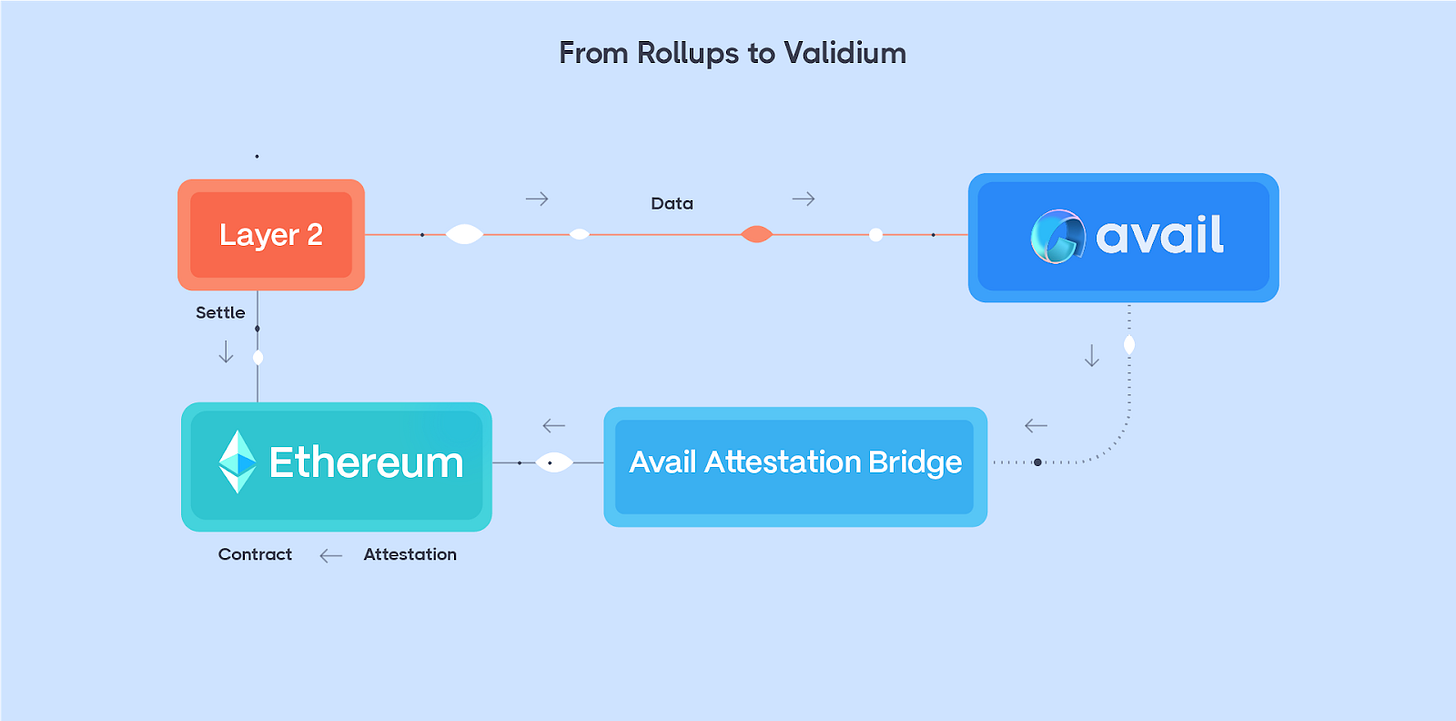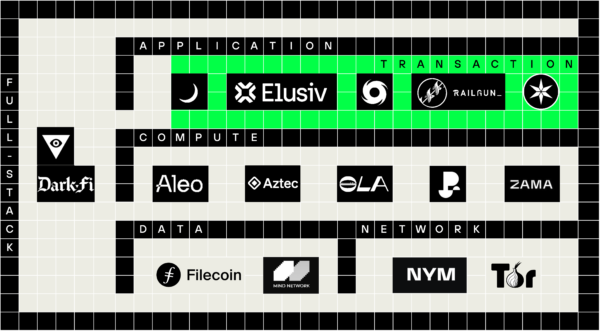Equilibrium Infra Bulletin #15: Sei v2 and Parallelized EVM, Avail's ZK Light Client, and Reviving Transaction Privacy
Equilibrium Labs builds the state-of-the-art of decentralized infrastructure. We are a global team of ~30 people who tackle challenges around security, privacy, and scaling.
This newsletter allows us to share more about what we read, what excites us, and what we think is relevant to the space. In addition, you will get a glimpse into the organization and our culture. You can also find us on Telegram.
If you have 2-mins to spare, we would appreciate feedback through this form!
We are collaborating with Token Terminal, a leading blockchain data provider, to give away 5x three-month subscriptions to Token Terminal Pro for free to the top five referrers. Winners will be announced on the 21st of December, so there is still time to participate!
The Pro subscription unlocks the full range of features in Token Terminal and enables you to better understand the fundamental drivers behind crypto protocols. If this sounds appealing to you - make sure to use the button below and start referring friends and colleagues 👇
Research, Articles, and Industry News:
📚 Sei v2 brings parallelized EVM - Recommended by Joakim:
Sei is a high-performance, low-latency L1 built on the Cosmos SDK and currently uses Wasm as its runtime. The v2 upgrade adds EVM as a complementary runtime alongside Wasm, which brings two main benefits:
Full EVM bytecode compatibility: Enables any Ethereum application (L1 or L2) to deploy on Sei easily (no code change required) and users can interact with Sei using familiar tools such as Metamask.
Optimistic parallelization of EVM: Rather than requiring developers to define the state that smart contracts are using, the chain will optimistically run all transactions in parallel. If conflicts arise, the transactions touching the same state will be rerun sequentially. In addition, parallelization happens at the state access level rather than the contract level, meaning that two separate USDC transfers (for example) can be parallelized (user A → user B, and user C → user D).

Overview of changes going from v1 to v2 (Source: Sei) There were some concerns about the inefficiency and high overhead of optimistic parallelization of the EVM, but Jay (co-founder of Sei) clarified that even if 100% of transactions were sequential - rerunning them would only result at worst in a 30% performance overhead. In reality, only ~15% of transactions on Ethereum L1 need to be processed sequentially. Sei is also looking to add support for intelligent optimistic parallelization later on where developers could define more granular dependencies, and the chain could predict what state each transaction will touch based on previous transactions.
The v2 upgrade also contains improvements to the storage layer (SeiDB) to improve long-term storage and prevent state bloat, improve read/write performance, and make it easier for new nodes to sync state. The main difference from before is breaking the single IAVL tree into 2 components - state store (needed for state machine and clients) and state commitment (needed for consensus). More about the reasoning here.
Key Takeaways: Whether we like it or not, the EVM still leads in adoption - both in terms of users and developers. With the v2 upgrade, Sei is trying to cater to those by making it easier for developers to deploy Ethereum-based applications on Sei and allow users to rely on familiar tools (such as Metamask) when using the chain. In addition, the optimistic parallelization of the EVM will improve performance compared to sequential execution. The upgrade also adds complexity, however, as getting compatibility between EVM and Wasm is not easy. Sei nodes are also required to run Geth (a Go implementation of the Ethereum Virtual Machine).
📚 Vector X: ZK Light Client To Power Avail’s Data Attestation Bridge - Recommended by Hannes:
Avail, a data availability/publication protocol, has partnered with Succinct to create a ZK light client called VectorX, that enables efficient verification of Avail’s consensus within the EVM. This helps secure Avail’s data attestation bridge to Ethereum, which enables rollups that settle on Ethereum to use Avail as a DA layer. The bridge will also be used for arbitrary message passing between Avail and Ethereum, enabling use cases like token bridging.

VectorX uses zkSNARKs to verify Avail’s GRANDPA + BABE consensus, which gets around the high cost of verifying a large number of Ed25519 signatures in the EVM (due to the lack of an Ed25519 precompile). Even using Ethereum-supported signature schemes (such as secp256k1) would be too expensive, as the cost of verifying signatures scales linearly with the number of validators. By using ZK-SNARKs, verification costs come down to ~200k gas.
ZKPs have other benefits as well, as you can batch proofs for multiple blocks and only post aggregate proofs on-chain - further amortizing cost. Initially, Avail expects to post proofs for Vector X on Ethereum every few tens of minutes.
Key Takeaway: A data attestation bridge enables Ethereum contracts to ensure the safety or liveness of Validiums/Optimiums by verifying the data attestations from Avail validators. Using a ZK Light Client (VectorX) makes verification within the EVM significantly cheaper, as a lot of the computation can be done off-chain rather than trying to verify signatures directly on-chain.
📚 Reviving Transaction Privacy: Approaches To Combat Compliance And Usage Challenge - Recommended by Hannes:
Privacy in blockchains remains an unsolved problem, particularly as you want to balance it with safety and decentralized compliance to avoid bad actors from misusing the network. However, privacy is not binary but rather a series of tradeoffs along three dimensions - what is private, the programmability of that privacy, and the strength of privacy guarantees. While we've focused more on programmable privacy (compute), Greenfield Capital gives a broader overview of how privacy can be represented in different parts of the stack before diving deeper into applications offering transaction privacy.
The article focuses on two main challenges facing applications that offer transaction privacy:
Compliance - Mainly centered around preventing bad actors from abusing the system (such as hackers laundering their dirty money) and navigating regulatory ambiguity (do things like travel rules apply, where you need to report the originator’s and receiver’s name?). Below is a summary of different compliance solutions and their tradeoffs. While most projects aim for decentralized compliance rather than KYC due to the user friction and trust in a third party not leaking your identity - protocols such as Hinkal and Panther Protocol have chosen the KYC route for maximal compliance.
Usability/UX - Includes issues such as whether to charge for private transfers (how much are users willing to pay for privacy, if any?), bootstrapping the anonymity set (privacy likes company - the bigger the private set, the better the privacy for individual users), and integrating with existing DeFi protocols to enable things like private swaps. Regarding bootstrapping the private set - either having privacy by default (e.g. Penumbra) or using economic incentives for people to stay within the private set (e.g. Namada) seems to be the most efficient.
Key Takeaway: Most blockchains today are still highly transparent compared to many other solutions, partly because achieving widespread privacy in a decentralized setting is hard (particularly while remaining compliant and avoiding bad actors from abusing the protocol). As seen in this overview, there is a wide range of existing solutions and no approach is necessarily more right or wrong than another. Protocols make different tradeoffs depending on what they are optimizing for (compliance, level of privacy, UX, cost…), which is reflected in the end product.
Personal recommendations from our team:
📚Reading: The Power of Unwavering Focus: In a world with a growing number of things competing for our attention, focus becomes the ultimate weapon. Dandapani spent ten years as a monk in a monastery, and this book aims to distill the wisdom he gained during that time🧘
🎧Listening: Carry the Zero by Built To Spill: An old song by the American indie rock band from Idaho, that resurfaced on our internal music channel.
💡Other: Results from PISA 2022: The most recent PISA survey, which aims to measure and compare the level of education across the world, was just released. This trend is not just true for Finland, but rather most OECD countries are going downhill. This caused some internal discussion on what the driver behind the negative trend is - What do you think? 🤔







